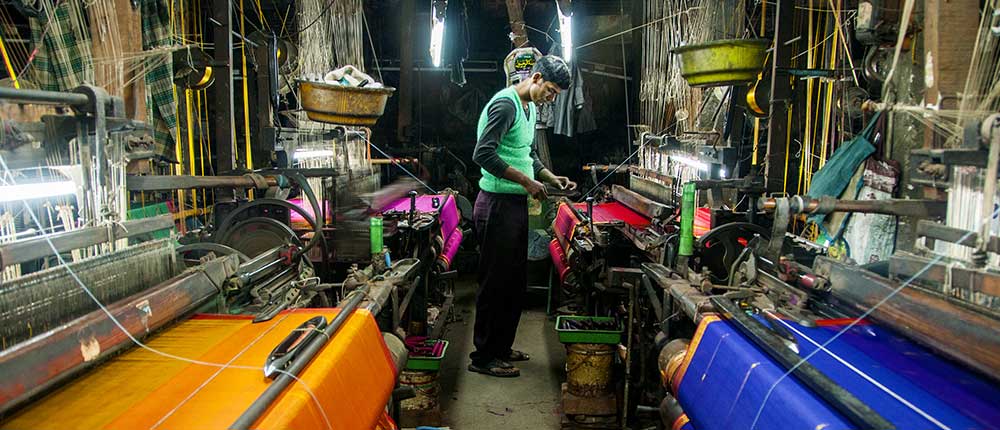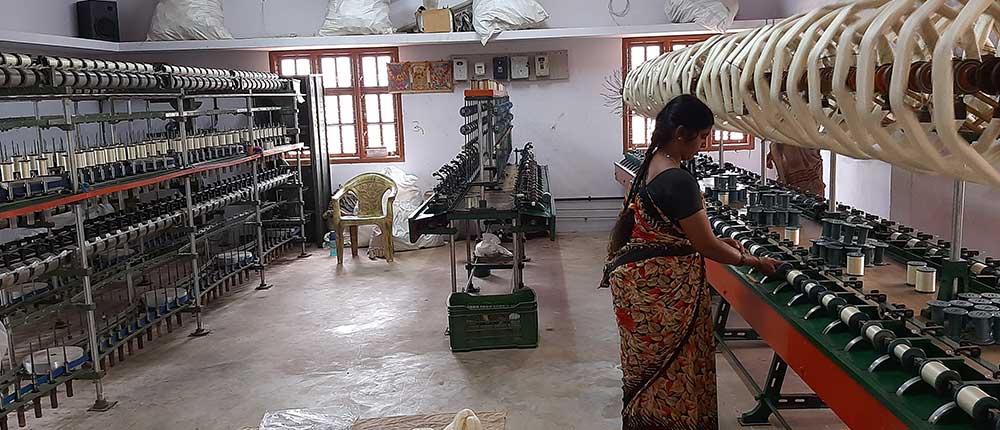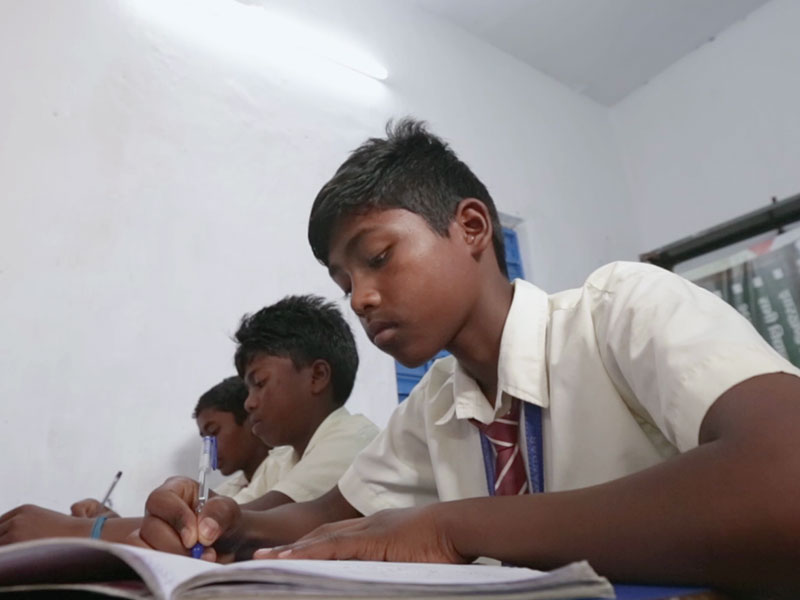A study by TERI explored the feasibility and potential of solar PV applications in the MSME sector in rural India. Here's what it found

The micro, small, and medium enterprises (MSME) sector in India has been one of the most significant drivers of the Indian economy over the last 50 years. As per the 73rd Round National Sample Survey (2015-2016), around 63.4 million unincorporated non-agricultural MSMEs are estimated to be engaged in various economic activities in India that contribute to 29% of the country's total Gross Domestic Product (2016-17) and employ nearly 111 million people.
The central and state governments have been rolling out various policies and schemes from time to time to enhance and improve infrastructure, technology, financing, and institutional support for the growth of MSMEs. This has been with a special focus on micro and small enterprises (MSE) that account for nearly 99% of MSME sector. Further, access and availability of energy source has been one of the critical factors in MSE sector that determines its productivity and employment generation. The sector has been heavily reliant upon a wide range of fossil fuel based energy sources (coal, wood, diesel, grid electricity, etc.) to meet its energy requirements for processing, etc. despite the fact that fuel prices and emissions are ever increasing. Field studies undertaken by different organisations in India have found that the Government of India has almost achieved universal electrification; however gaps still exist in the quality and reliability of power supply in the rural areas where the MSE units are often based.
At the same time, there has been a gradual shift in technology and price reduction in producing reliable energy through cleaner sources, particularly solar photovoltaics. They are widely considered a clean and reliable energy source that not only reduce the dependency on fossil fuels but also significantly cut down the cost of production due to their local generation and management. Thus it is imperative to use solar energy to enhance the productivity and competitiveness in the MSE sector.
A study to make the sun work for our MSMEs
The Energy and Resources Institute (TERI) with funding support from Shakti Sustainable Energy Foundation, New Delhi, undertook a research study to explore the feasibility and potential of solar PV applications in the MSME sector in rural India. The objective of this study, which particularly targets MSE clusters, is to identify 8-10 small and micro enterprise clusters, develop a road map for solar intervention in the feasible clusters, and create evidence for policy intervention for scale up. To achieve this, the study undertook a situation analysis through literature review and preliminary national level stakeholder consultation. It then conducted a scoping study in five shortlisted states, in which it further identified three clusters for a primary survey. The findings of the study were shared in two state-level roundtable meetings and one national level workshop, in which stakeholder feedback was sought on the findings.
Ultimately, the states for Karnataka, Telangana, Gujarat, Uttar Pradesh and Jharkhand were chosen for this exercise. These states were chosen on the basis of factors such as average load shedding hours, solar irradiance, aggregate numbers of MSMEs per households, employment percentage, favourable solar and MSME policies, and feedback from stakeholders.
Based on these factors, a primary survey was carried out in nine selected clusters - the Khasbag (Belgam) power loom, Chhannapatna wooden toy, Sidlaghatta silk twisting and Shivarapatna stone idol making clusters in Karnataka; the Gandhinagar and Kutch pottery cluster and the Kutch, Surendranagar and Patan salt clusters in Gujarat; and Bishnugarh brass, Maganpur sewing, and Kharasawan silk reeling in Jharkhand.
The findings from the primary survey were analysed based on the information gathered such as existing sources of energy, consumption pattern, types of equipment and their production processes, energy efficiencies, potential solar applications and incremental financial benefits, interest of micro entrepreneurs of respective clusters to invest in introducing solar power systems, etc. Consequently, solar PV systems were designed for different categories of micro-entrepreneurs of clusters and potential business models suggested for possible implementation and to scale up solar PV across similar clusters.

Key findings
- A total of nine micro-enterprise clusters - four from Karnataka, three from Jharkhand and two from Gujarat - were studied. Most of them are traditional and quite popular in their respective states. In fact, the salt cluster of Kutch and wooden toy cluster of Channapatna are also well known nationally. A majority of them, such as the wooden toy, silk thread twisting, and power loom clusters in Karnataka, and the silk reeling and brassware clusters in Jharkhand are already registered under different schemes of the Ministry of MSME for possible assistance.
- The clusters in Jharkhand face unreliable power supply due to which the relatively energy intensive brass utensil cluster prefers diesel generators over the local grid supply. However, the recurring fuel costs are an additional burden on the micro entrepreneurs. These clusters, thus, present a huge potential for solar deployment to reduce production cost and increase profitability. In contrast, clusters of Karnataka and Gujarat received regular grid supply and power charges are highly subsidised (as high as 60% of the electricity bill) by the government, especially in Karnataka. In this scenario, the role of solar intervention would be to relieve the state government of huge amounts spent on power subsidies, which can potentially be diverted to provide subsidies on capital costs of the solar systems.
- Lack of adequate capital subsidy provision under solar schemes for industry and commercial sector may be one of reasons due to which micro and home based enterprise clusters have not yet opted for solar (around 10% of the capital cost is available for solar by the industry departments in the studied states). However, most of the entrepreneurs have expressed their willingness to invest 10-20% of cost of solar PV system if it is subsidised and financed through various schemes.
- The MSME policies of all three states encourage the use of non-conventional energy sources in manufacturing sector. However the popular schemes of MSME (Prime Minister Employment Guarantee Scheme, Cluster Development Programme for Micro and Small Enterprise, etc.) do not explicitly mention the necessary subsidy provision for promoting solar PV in the sector. The study could not even find any exemplary effort to promote solar PV by leveraging any loan instrument (such as MUDRA loan) in the states studied.
- Lack of awareness among the micro and home based enterprises about the viability of solar technology as well as its long term socio-environmental benefits may be another critical factor for low or no adoption of solar energy in the sector.
- The solar energy determined for the studied clusters varies from 1kW to 14kW based on their daily energy requirement. Introduction of solar PV may be possible through convergence of both central and state sector schemes (including Ministry of MSME , the state renewable energy agency or state livelihood mission, etc.) combined with suitable financial instrument (such as the MUDRA scheme) as well as equity investment of enterprises.

Conclusion
The study has assessed the solar potential across the clusters and the aggregate potential found is quite encouraging. In this context, solar PV has huge potential in similar clusters across the country.
Unlike household electrification, there is no central or state scheme to promote solar PV in the sector. In this scenario, there is a need for a multi-pronged strategy by engaging multi-stakeholders from the Ministry of MSME, MNRE, concerned state-level nodal agencies, implementing agencies, solar PV manufacturers, banks/other financial institutions, technical and research institutions, etc.
The strategy will be about finding a way out for energy security through policy inclusion as well as schemes with explicit support for clean energy, including solar PV promotion that will boost productivity, employment and growth in the sector.

